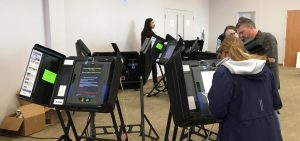News
Ohio elections officials run into issues as they prepare for the August vote they opposed
By: Karen Kasler | Statehouse News Bureau
Posted on:
COLUMBUS, Ohio (Statehouse News Bureau) — Ohio’s boards of elections are getting prepared for an August special election they didn’t anticipate, after a state law that took effect last month banned most of them. But elections officials, who as a group opposed this summer statewide vote on whether to require 60% voter approval to amend the constitution, are running into some problems.

But he said his team is running into issues with facilities that came up with new plans after most August special elections were eliminated.
“Already we have three polling locations that are normal polling locations for us that are just not going to be able to accommodate us because they already have booked other functions and we can’t bump those out,” said Rezabek. “If they’ve already booked something —because we did not anticipate it based on House Bill 458, that there would be very minimal use of August elections for a specific purpose —many of them had made other plans, and so we’re working around them.”
And then there’s poll worker recruitment: “Getting 15–1,600 people on a short notice like we have, I think, will be difficult for us,” said Rezebek.
The Ohio Association of Elections Officials said Lawrence and Seneca Counties are also reporting having trouble securing polling locations.
The group voted last month to oppose the August special election on the resolution to make it harder to amend the constitution. They cited the estimated $20 million cost, the challenges of finding poll workers and locations, and the strain on election workers as they ready for the fall vote.
Local candidates and issues must be filed the next day for the November general election.
Rezabek’s expectation of 30% turnout for an August election during an odd year is high. But he said he’s basing that “on the energy like that one you saw that happened on the House floor.”
And he said that may continue into the fall vote, where voters could see an amendment on reproductive rights and abortion access.
“Many of those entities for or against are gearing up in the anticipated amount of money that will be spent, because it does affect also what will happen in November, which we also think will be higher than just normal turnout for these odd year elections,” said Rezabek.

